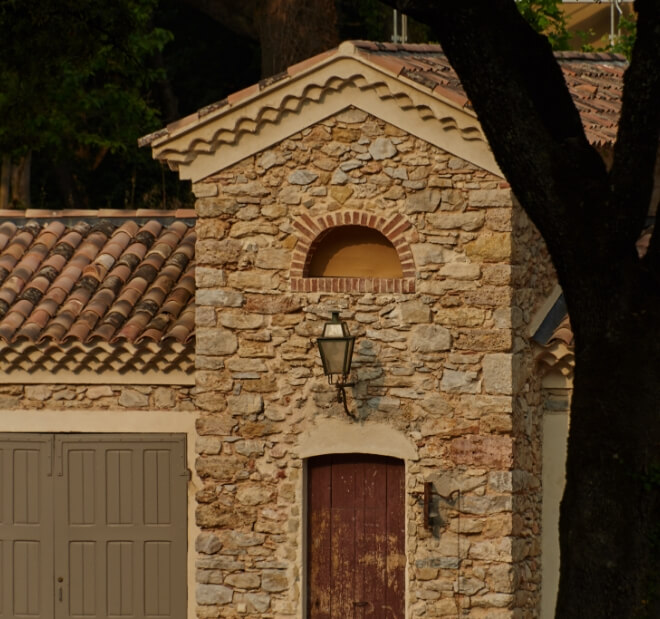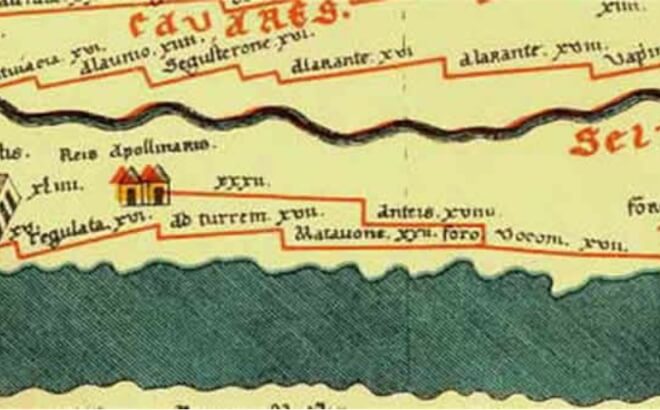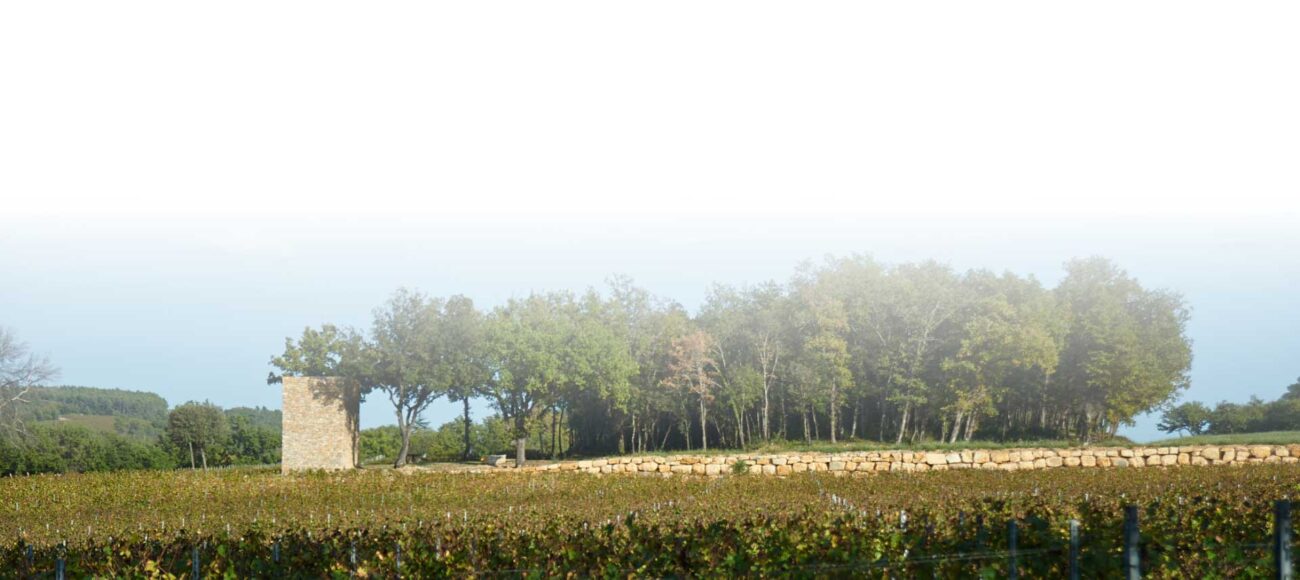The story
of the domain
Representation of the Aurelian Way on the table of Peutinger (copy of the thirteenth century of an ancient Roman map) between Aix en Provence and Fréjus. You will note in particular the resorts of Tegulata (on the terroir of Pourrières or Puyloubier) and ad Turrem (Tourves).

-241 BC
Via aurelia
La Via Aurelia is the ancient Roman road linking Rome to Gaul, built in 241 BC. It stopped in Luni during the era of the Republic, on the Mediterranean coast of northern Tuscany. Under the emperor Augustus, it stretched from Vado in Liguria to the Var River in Nice. Although it was known as the Via Giulia Augusta at that time, it now goes by its original name. It was used to conquer the Ligurian tribes and allowed the foundation of important cities like Forum Julii (Frejus) and small villages like Forum Voconii (Vidauban). The Via Aurelia has always served for cultural exchanges and the trade of the historical jewels of the terroir such as olive oil and rosé wine. It is along this historic road that the Bellini estate was born in the tenth century.

800 – 1200
Fouant Lado, the birth of the great fountain

History in the making
The first traces of the estate may be found in the Polyptych of Wadalde, which was drawn up between the ninth and tenth century and which describes the estate among the many possessions of the monks of Saint Victor. It is preserved in the departmental archives of Bouches du Rhône. It is more likely, in view of surrounding constructions, that the existence of the domaine dates back to the Gallo-Roman period.
The fort was located on the Mistral spring which fed a large basin, Fouant Lado (Large Fountain) which gave the first name in recent times to the domaine, Fontlade.
Historic visitors
Amongst the emblematic personalities who enjoyed staying in this region were the Counts of Provence, of whom Brignoles was the playground, and Saint Thomas Aquinas, who stayed there during his voyage from Naples to Paris during the thirteenth century.
In the Christian chronicles, how can we not mention the story of Mary Magdalena’s passage through the massif of Sainte Baume to the Basilica of Saint Maximin, where her relics would be kept until the present day.
Château Bellini renews today this vocation to welcome and share what is beautiful and good by opening its doors to travelers in search of taste and authenticity.
1600 – 1700
A new life for the chateau
An Authentic restoration
The work that has been done on the Château is not a refresh but a complete restoration of the building, which in its previous state dated back to the late seventeenth and early eighteenth centuries.
Respecting the original purpose of the residence while revising all of its spaces in order to ensure high quality, the architecture and interior design choices aim to highlight the omnipresent beauty of the site while embellishing them with contemporary feel and a deep attention to detail.
Beautiful materials
The different materials, all noble and rare, come in part from Italy, as if to seal the strong and ancient bonds between the two regions created by the Via Aurelia over almost 2000 years. Italian atmospheres fuse with the light of Provence to welcome you in an elegant setting.

2016
The rebirth of the domaine
In 2016, during the commemoration of the 500th Anniversary of the death of the famous Venetian painter Giovanni Bellini, the Domaine was acquired by Tom Bove, who wanted to honor this great artist and his own Italian origins with a heartfelt reminder in the name of the Château.
Equally, it calls to memory the great Sicilian composer Vincenzo Bellini, author of the Norma, Casta Diva or i Puritani, among others.

2022
Our vineyard
Château Bellini extends over 120 hectares in long undulating terraces, consisting mainly of clay and limestone soil, rich in natural rock, which gives our wines their spectacular minerality and freshness.
The vines now occupy 15 hectares and are surrounded by a magnificent oak forest.
The region has a continental climate, with hot summers contrasted by cool nights, followed by winters with light night frosts but pleasant daytime temperatures: ideal conditions for vine-growing, which have contributed to the establishment of viticulture in the region since time immemorial.
When the Domaine was acquired, a complete restructuring of the plots and land began to give our plants all the right conditions for growth and production, with total respect for nature and organic farming.
